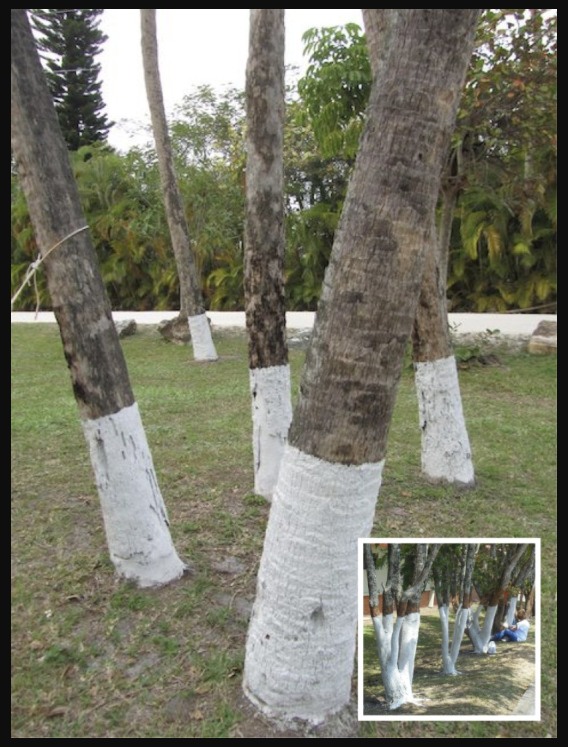A white-painted tree can signify a range of purposes depending on the local context, and its meaning often ties to practical,
environmental, or symbolic reasons. One of the most common uses is pest control—white paint, typically lime-based, is applied
to tree trunks to deter insects and prevent the bark from splitting
due to temperature fluctuations. It also serves as a method of frost protection,
as the white surface reflects sunlight and helps reduce the risk of frost cracks in colder climates. In rural or suburban areas,
painted trees might mark property boundaries, helping landowners distinguish their land.
Similarly, in areas undergoing conservation or ecological research,

